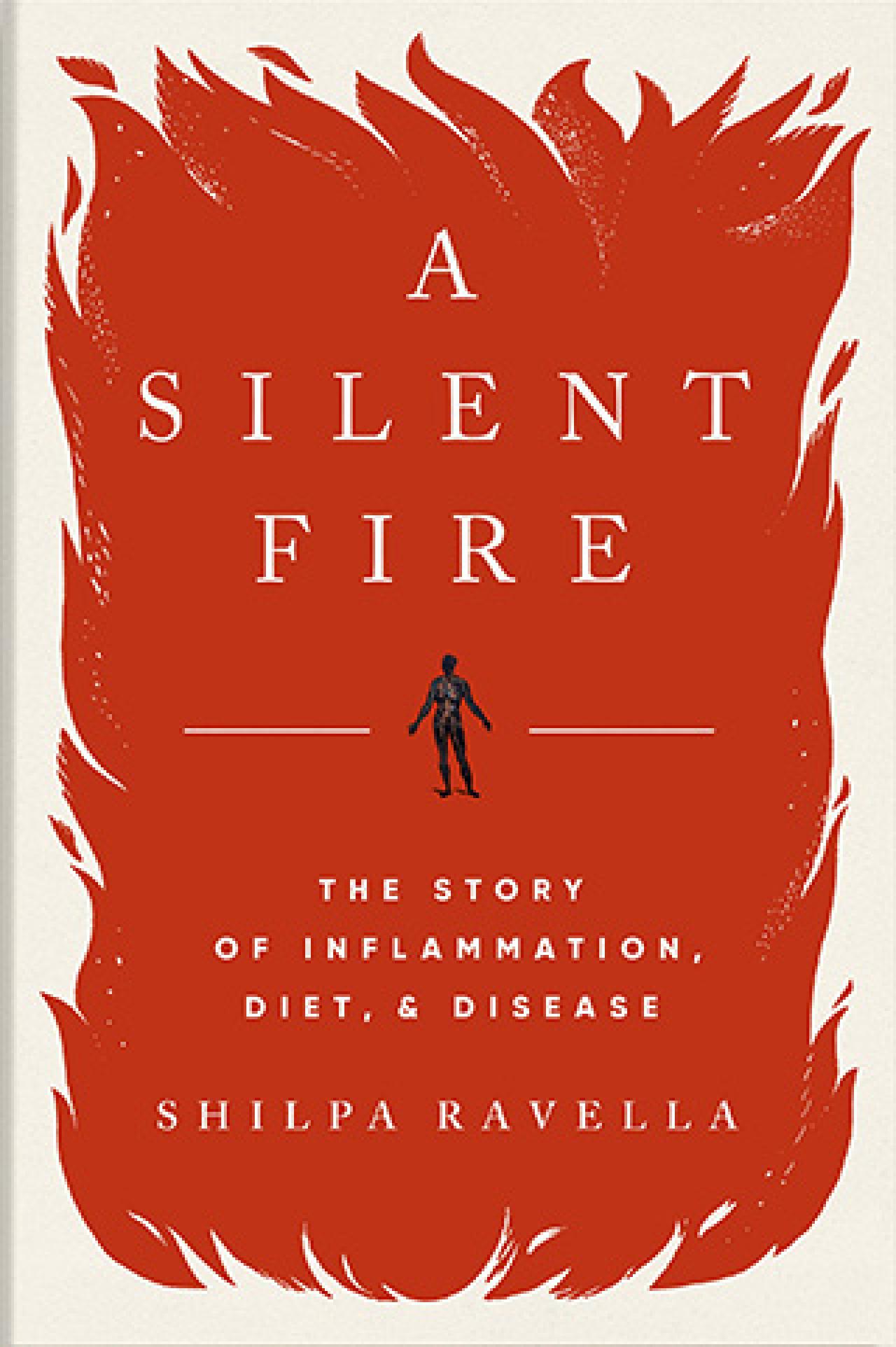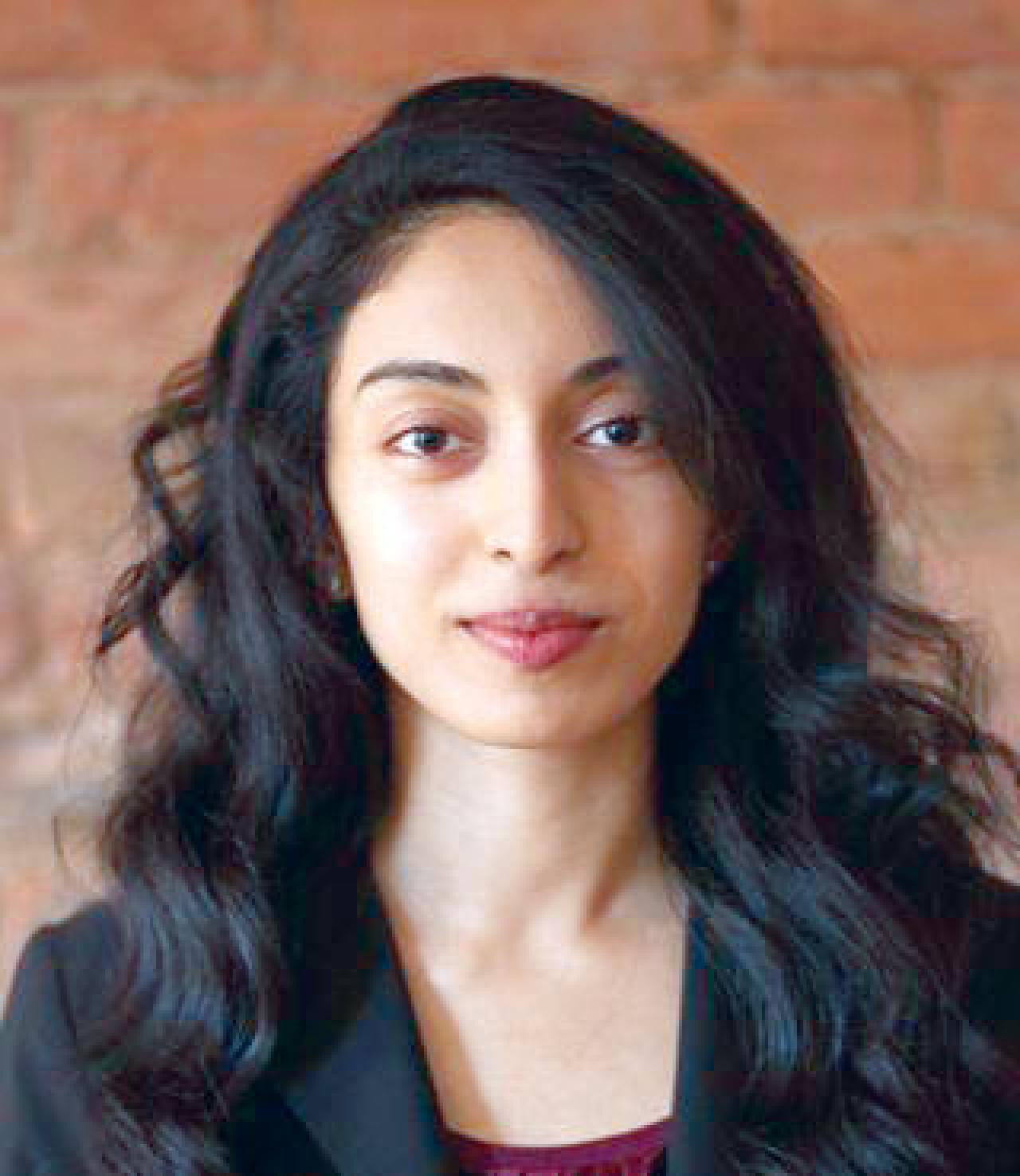
Medical terminology is filled with "itises": arthritis, colitis, hepatitis, myocarditis. "Itis" means inflammation, and all these terms indicate the specific part of the body that is affected: joints, colon, liver, heart.
"A Silent Fire: The Story of Inflammation, Diet, and Disease," a book by Shilpa Ravella, MD, presents the story of medical science's increasing understanding of hidden inflammation. Such inflammation is "silent and sinister," and it is tied to many chronic conditions, writes Ravella, a gastroenterologist with expertise in nutrition.

Ravella, assistant professor of medicine at the Columbia University Vagelos College of Physicians and Surgeons, spoke with us about hidden inflammation, its connection to chronic conditions and to food and germs, and what medical professionals and the public can do about inflammation.
What is inflammation?
We often think of inflammation as a primeval force that evolves with a benevolent intent to strive to protect the body against things like pathogens, poisons, and traumas, which ancient humans routinely succumbed to. Oftentimes you can see inflammation with the naked eye if you hurt yourself in some way, such as slamming your knee onto the edge of a table. Inflammation works to heal the wound. However, the problem is that inflammation is not always helpful or even harmless. Today, we know inflammation plays a very important role in not only autoimmunity, but also in many other chronic diseases of modernity like heart disease, cancer, obesity, diabetes, and aging. Inflammation is not only a consequence of disease, but also a potential root cause of it.
What do you mean by hidden inflammation?
In the book, I focus on this idea of low level invisible inflammation that simmers quietly in the bodies of ostensibly healthy people and how it may be one common thread running through many or nearly all diseases. The salient unifying thread for hidden inflammation that I describe in the book is that we are not routinely accustomed to diagnosing and treating it. It's a definition that is evolving as we learn more about hidden inflammation.
What motivated you to write this book?
I was initially motivated by the fact that someone very close to me had experienced a devastating rare autoimmune disease. I was also motivated by my patients and others who suffer from all of these diseases that are linked to hidden inflammation. As I started to get into more of this research, I was inspired by the story of the science and of the scientists who dedicated their lives' work to shedding light on this mystery. It's an untold story and an unfinished one, because we are still learning so much every day about this topic. I feel like we are at the tip of this very exciting iceberg.
Tell us about some of the prominent figures highlighted in your book.
They expanded our understanding of inflammation. German scientist Rudolf Virchow in the 1850s identified the cellular characteristics of inflammation. He inspired Russian zoologist Elie Metchnikoff's discovery of macrophages, which are cells that help defend the body. Virchow tried to see what could not be seen with the naked eye. Metchnikoff was an inspiring character. He was depressed for a long time because no one believed him. One story in the book tells how his family wanted him to enjoy a day out, but he opted to stay home and continue his experiments to figure out what was going on with the body. He ended up formulating the first modern theory of immunity. The book introduces stories about other figures as well, including contemporary scientists.
Are we seeing a paradigm shift in inflammation?
Based on research that has accrued to date, for the first time we are able to say that hidden inflammation, which we typically don't test for, truly can be a cause of disease. It can collude with our genes and environment to evoke disease, and it may be a common thread associated with many diseases. That is one paradigm shift. Another important takeaway is to understand the concept that if one is not diagnosed with a typical inflammatory disease, what exactly does it mean to be inflamed in the modern age? That's something that has been quite nebulous for a long time.
What role does food play in inflammation?
The book digs deep into two developing narratives that have begun to take hold in the struggle to understand and combat inflammation: food and germs. There is such a growing body of research pointing to the power of our diets to cause, avert, or treat inflammation. I want to get at whether there is evidence for a real anti-inflammatory diet, one that could help to prevent or heal some of these chronic fatal diseases.
Also, food is one of the best weapons against not only most death and disability in the world, but also against the ongoing destruction of the planet. When you look at the greenhouse gas emissions from livestock, we cannot sustain eating as many animal foods as we are eating,
What about the role of germs?
The story of germs is fascinating: We have this gut microbiome and trillions of bugs in our intestines. We understand now that germs are symbionts. They are crucial to human health and are not just pathogens responsible for disease. Germs also play a crucial role in immune function and inflammation. I wanted to home in on if we can leverage their power to foster an optimal inflammatory state where immune systems don't overreact or underreact to challenges, and where we can strengthen our immunity and help to stave off autoimmunity and other chronic diseases.
Beyond diet, what other aspects of modern living may factor into inflammation?
We don't attain the exercise that we used to, and we use a lot of modern products. Certain cleaning supplies, personal care products, and other household goods contain chemicals that may inflame us. Pollution is also a major issue, particularly in some cities. There are a number of lifestyle factors that create a mismatch from the environment we are supposed to be in and the environment that we have cultivated for ourselves.
What do you want readers to take away from your book?
I would love for folks to garner a better understanding of how inflammation, diet, and the microbiome are connected and how they are tied to not only human health but also planetary health. It would be great if medical professionals could use this information to prescribe some lifestyle changes as they would prescribe medicines. For the lay public, I hope they will be able to implement some of the takeaways in the book into their lives regarding how they can change their diet and lifestyle to prevent chronic diseases and to take care of the planet.
References
See more about the book at https://shilparavella.com/.






